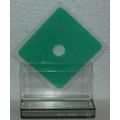Oban, Argyll & Bute - from South - early undivided back postcard c.1901
- Condition : Used
- Dispatch : 2 Days
- Brand : None
- ID# : 183161538
- Quantity : 1 item
- Views : 183
- Location : United Kingdom

- Seller : justthebook (+1699)
- Barcode : None
- Start : Mon 08 Jul 2019 04:11:46 (EDT)
- Close : Run Until Sold
- Remain : Run Until Sold
Checks/Cheques
 for 1 item(s) edit
for 1 item(s) edit
Shipping Calculator
More Listings from This Seller view all
Seller's Description
- Postcard
- Picture / Image: Oban from the South - early undivided back postcard - (these were the norm before the rules changed on writing the message on the address side in 1902)
- Publisher: Reliable series
- Postally used: no
- Stamp: n/a
- Postmark(s): n/a
- Sent to: n/a
- Notes / condition:
Please ask if you need any other information and I will do the best I can to answer.
Image may be low res for illustrative purposes - if you need a higher definition image then please contact me and I may be able to send one. No cards have been trimmed (unless stated).
------------------------------------------------
Postage & Packing:
Postage and packing charge should be showing for your location (contact if not sure).
No additional charges for more than one postcard. You can buy as many postcards from me as you like and you will just pay the fee above once. Please wait for combined invoice. (If buying postcards with other things such as books, please contact or wait for invoice before paying).
Payment Methods:
UK - PayPal, Cheque (from UK bank) or postal order
Outside UK: PayPal ONLY (unless otherwise stated) please. NO non-UK currency checks or money orders (sorry).
NOTE: All postcards are sent in brand new stiffened envelopes which I have bought for the task. These are specially made to protect postcards and you may be able to re-use them. In addition there are other costs to sending so the above charge is not just for the stamp!
I will give a full refund if you are not fully satisfied with the postcard.
----------------------------------------------
Text from the free encyclopedia WIKIPEDIA may appear below to give a little background information (internal links may not work) :
*************
Oban (i/ˈoʊbən/ oh-bən;[2] An t-Òban in Scottish Gaelic meaning The Little Bay) is a resort town within the Argyll and Bute council area of Scotland. Despite its small size, it is the largest town between Helensburgh and Fort William. During the tourist season, the town can play host to up to 25,000 people. Oban occupies a setting in the Firth of Lorn. The bay is a near perfect horseshoe, protected by the island of Kerrera; and beyond Kerrera, the Isle of Mull. To the north, is the long low island of Lismore, and the mountains of Morvern and Ardgour.
The site where Oban now stands has been used by humans since at least mesolithic times, as evidenced by archaeological remains of cave dwellers found in the town.[3] Just outside the town stands Dunollie Castle, on a site that overlooks the main entrance to the bay and has been fortified since the Bronze age. Prior to the 19th century, the town itself supported very few households, sustaining only minor fishing, trading, shipbuilding and quarrying industries, and a few hardy tourists.[4] The Renfrew trading company established a storehouse there in about 1714 as a local outlet for its merchandise, but no Custom-house was deemed necessary until around 1760.
The modern town of Oban grew up around the distillery, which was founded there in 1794. The town was raised to a burgh of barony in 1811 by royal charter.[5] Sir Walter Scott visited the area in 1814, the year in which he published his poem The Lord of the Isles; interest in the poem brought many new visitors to the town. The arrival of the railways in the 1880s brought further prosperity, revitalising local industry and giving new energy to tourism. Shortly thereafter, McCaig's Tower, a folly and prominent local landmark, was constructed, as was the ill-fated Oban Hydro.
During World War II, Oban was used by Merchant and Royal Navy ships and was an important base in the Battle of the Atlantic. The Royal Navy had a signal station near Ganavan, and an anti-submarine indicator loop station, which detected any surface or submarine vessels between Oban, Mull and Lismore. There was a controlled minefield in the Sound of Kerrera, which was operated from a building near the caravan site at Gallanach. There was also a Royal Air Force flying boat base at Ganavan and on Kerrera, and an airfield at North Connel built by the Royal Air Force. A Sector Operations Room was built near the airfield; after the war, this was extended to become the Royal Observer Corps Group HQ.
Oban was also important during the Cold War because the first Transatlantic Telephone Cable (TAT-1) came ashore at Gallanach Bay. This carried the Hot Line between the US and USSRpresidents.
Since the 1950s, the principal industry has remained tourism, though the town is also an important ferry port, acting as the hub for ferries to many of the Hebrides.
Listing Information
| Listing Type | Gallery Listing |
| Listing ID# | 183161538 |
| Start Time | Mon 08 Jul 2019 04:11:46 (EDT) |
| Close Time | Run Until Sold |
| Starting Bid | Fixed Price (no bidding) |
| Item Condition | Used |
| Bids | 0 |
| Views | 183 |
| Dispatch Time | 2 Days |
| Quantity | 1 |
| Location | United Kingdom |
| Auto Extend | No |
















